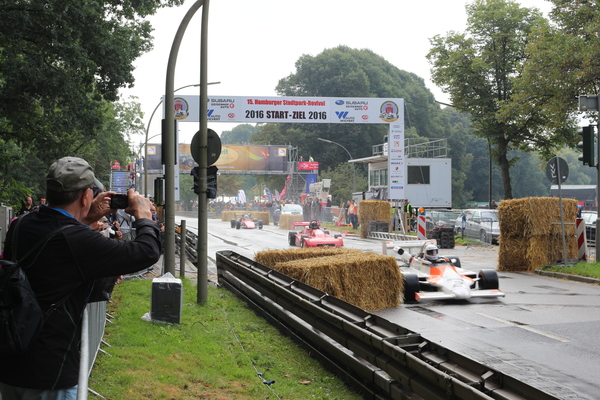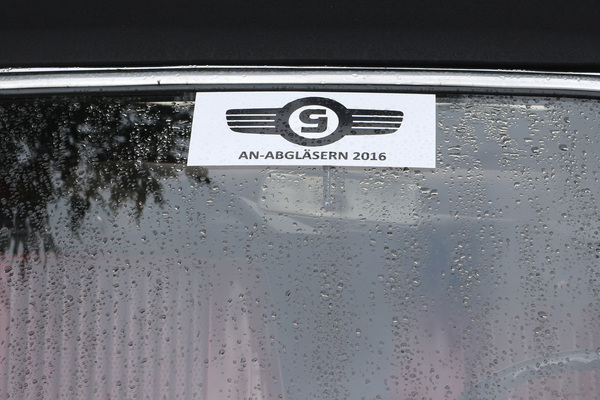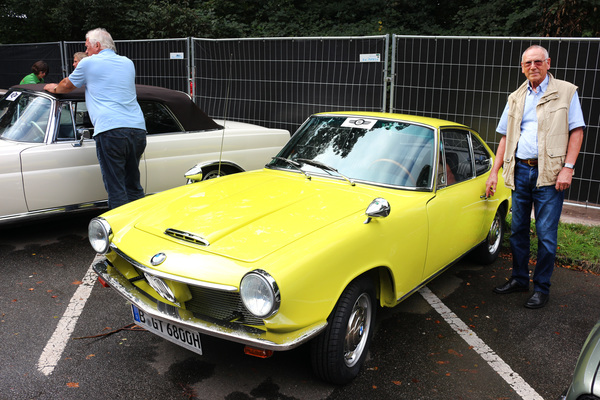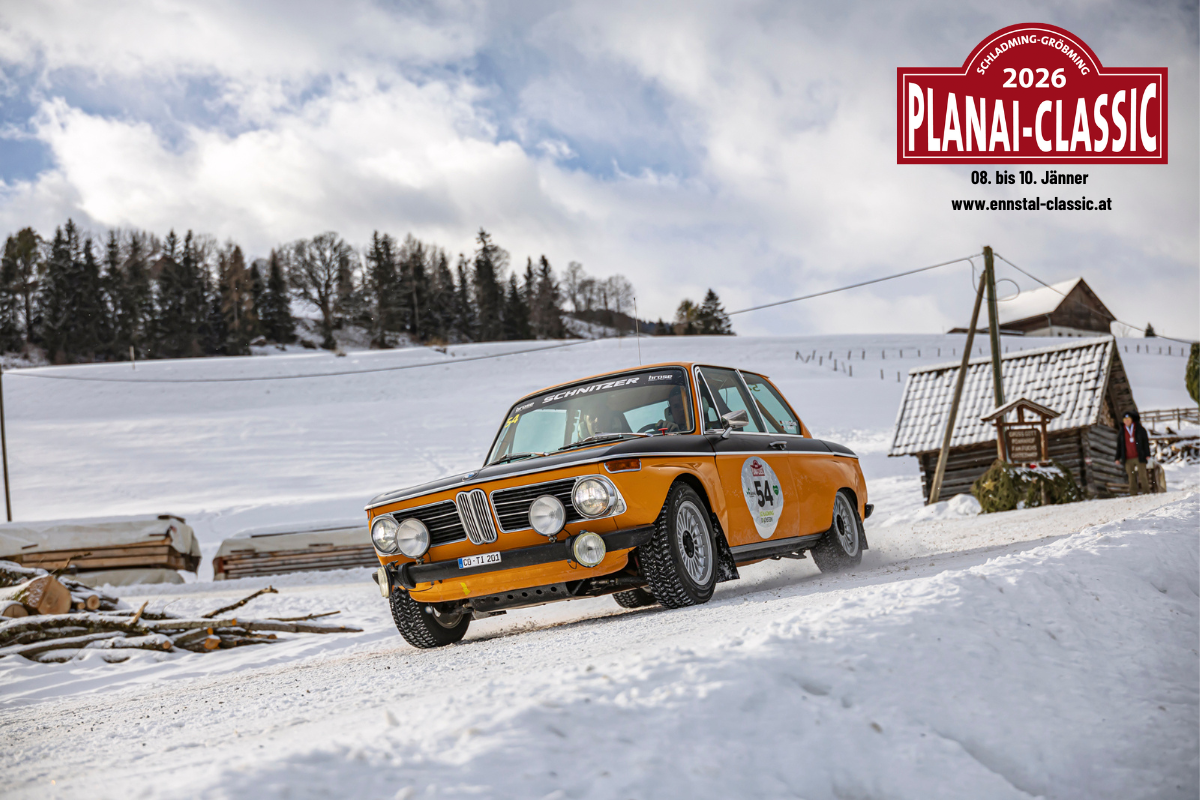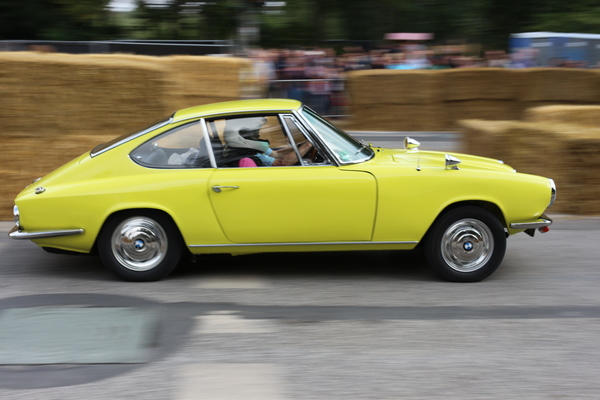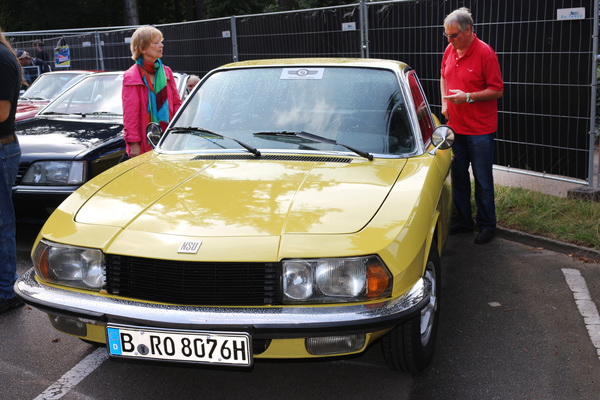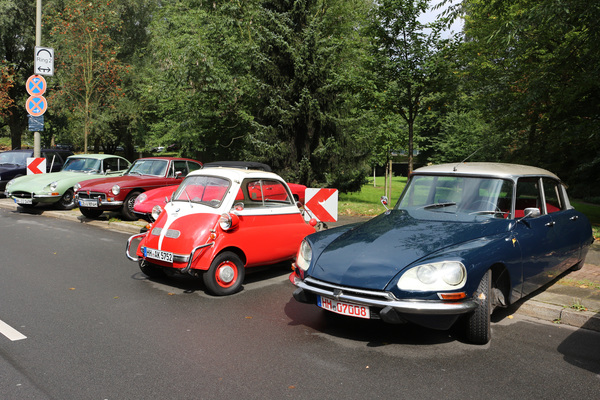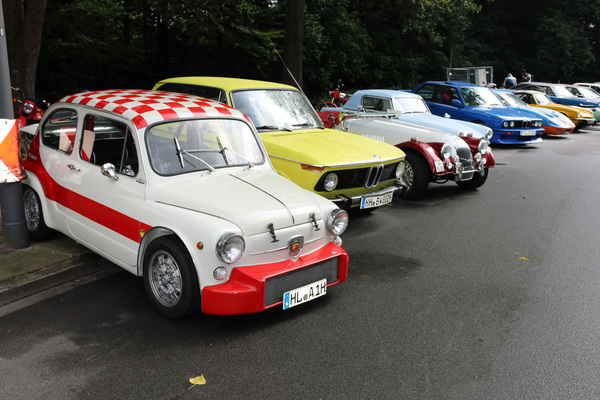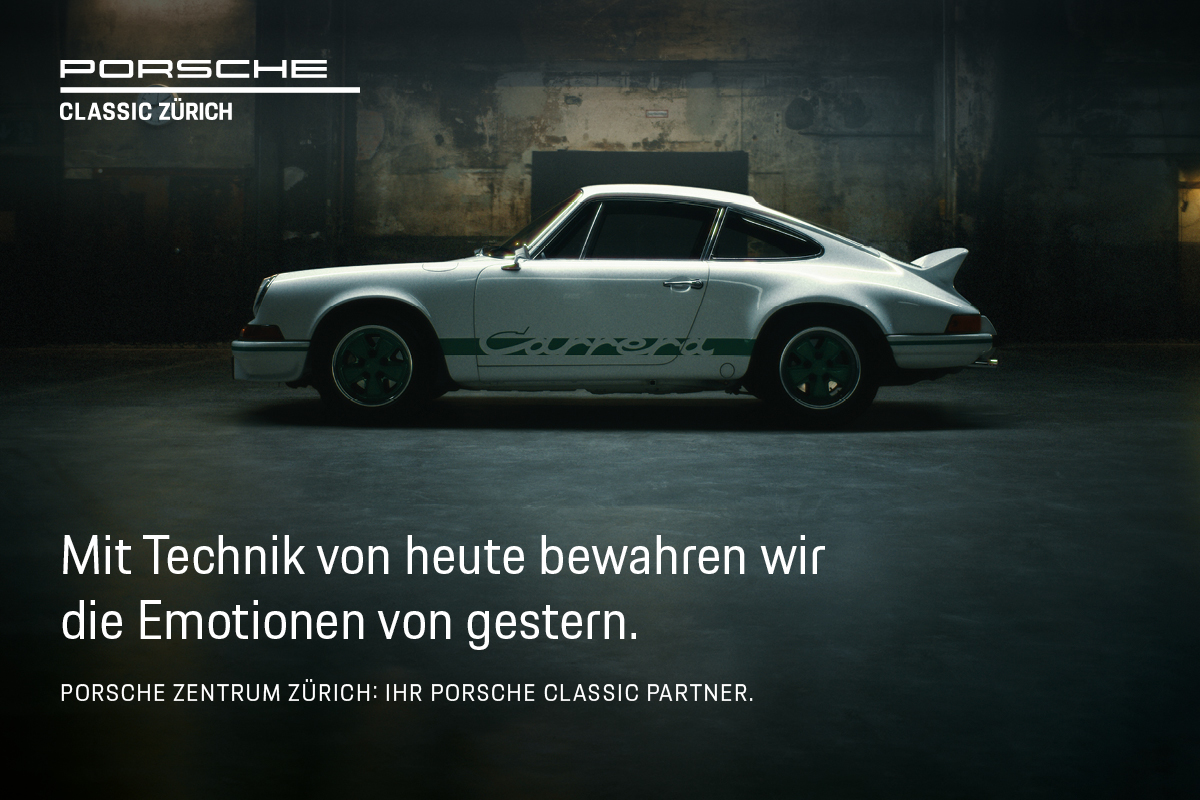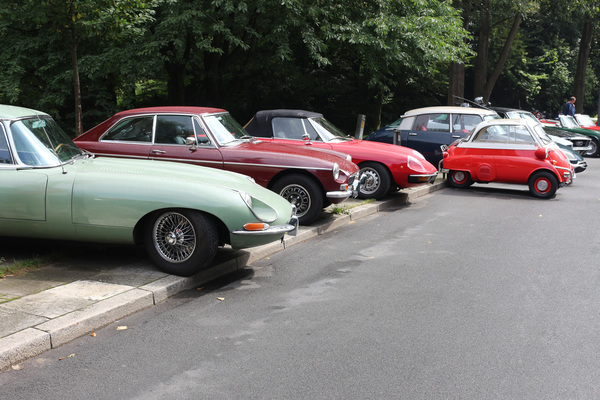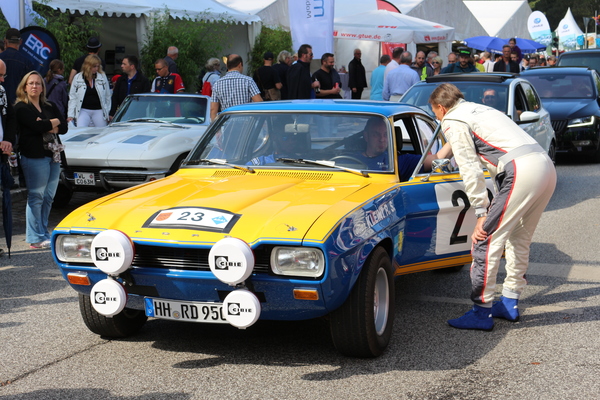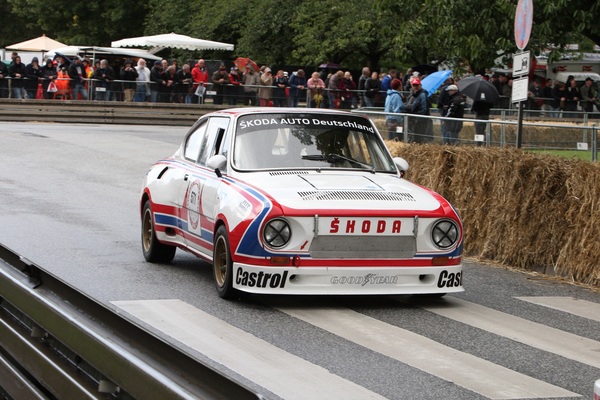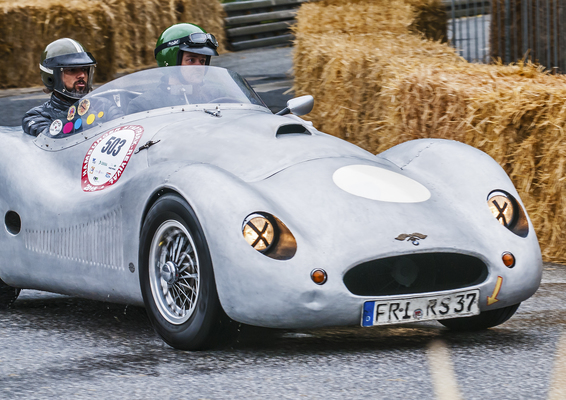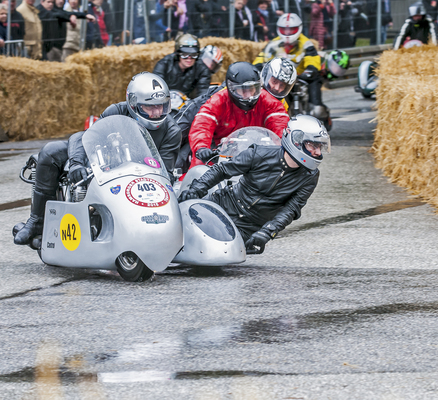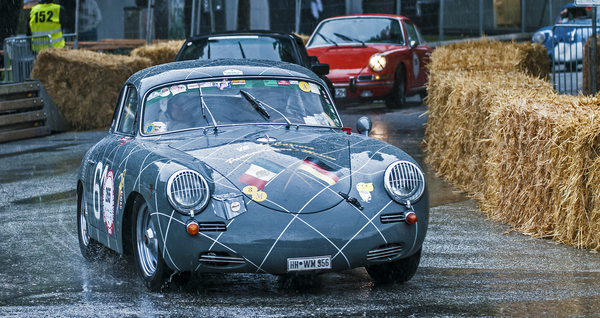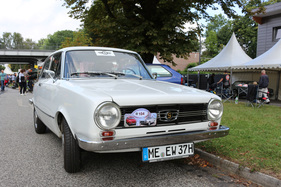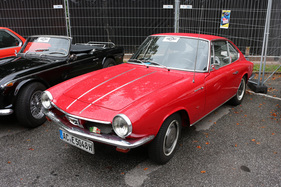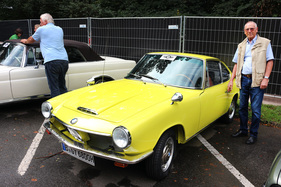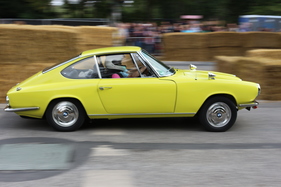For the 15th time, around 350 historic cars, motorcycles and sidecars raced around the specially cordoned-off street circuit in Hamburg's Stadtpark on September 3 and 4, 2016. Particular eye-catchers were the models of the defunct Glas brand that arrived together and the first public racing appearance of the restored Ford Capri Kleint RS 2600, with which Walter Röhrl's career began.

At the 15th Hamburg Stadtpark Revival, the national Glas Club was not so particular about brand affiliation. The club members call their end-of-season tours "Abgläsern". The club had been invited to two special runs, but there were a number of other makes in the group. Echard Pohl, for example, arrived with his NSU RO 80 from 1977, which actually still has its first engine. In earlier model years, the lubrication of the Wankel engine was often inadequate. "We don't take the brands too seriously," emphasizes Eugen Buch in front of his 1968 BMW 1600 GT. "We see ourselves more as a regulars' table where all classic car enthusiasts are welcome." BMW took over the Glas-Autowerke in 1966. The 1600 GT is the further development of the Glas 1300/1700 GT, under Bavarian aegis, of course, with a BMW engine.
The top Glas product
The Glas brand became famous above all with its Goggomobil, which was built from 1955 to 1969. Burkhard Peglow was on the track that year with his 1967 Coggo Coupé: "A great car, a top product even back then," he enthuses. The company began building scooters as early as 1951 and by 1957 had become the third-largest scooter manufacturer in Germany after NSU and Hoffmann-Vespa.
In 1959, the carmakers launched a sports coupé called the S 35 based on the Isar saloon, which was the eye-catcher at the IAA that year. Its eye-catching radiator grille and sporty handling soon earned the model the nickname "West Pocket Ferrari".

The S 1004 followed in 1961 with the world's first engine (with the exception of a small-scale American production run by Devin) whose overhead camshaft was driven by a timing belt. Glas achieved a number of racing successes with the vehicle in motorsport in the 1960s.

Torsten Volklandt from the club used to drive it himself in circuit and slalom races. The Turin designer Pietro Frua had designed the small GT 1300 as a coupé and convertible for Glas. The model even competed with the newly launched Porsche 901.
The success made him overconfident: Frua designed a coupé with a V8 engine for Glas. Such an engine was only available in German cars at the time in the Opel Diplomat and the Mercedes Benz 600, but the sales figures fell short of expectations. The company was unable to cope with the slump in sales and was eventually sold to BMW. The last Goggo left the BMW factory in 1969.
Vintage car variety in the city park
This year's eye-catcher was once again the specially set up classic car parking lot. Guests who arrive with their own classic vehicle and display it there receive a reduced admission price.

In addition to the usual regularity races for private car and motorcycle drivers, this year there were special races worth seeing in the MG & Friends pre-war class, as well as with Morgan and the Porsche Cup.

Many vehicles from the long history of the Volkswagen Group brands were also on display, including the Skoda 130 RS and 200 RS racing cars.
Röhrl-Capri back again
For the first time since its rediscovery and restoration by the Hamburg Autonomous Youth Workshops and the Tost company, the Ford Capri Kleint RS 2600 made an appearance. Walter Röhrl made an impressive start to his career with this car at the 1972 European Rally. Back then, the Hamburg-based tuning company Kleint had made the engine and the vehicle race-ready.

The designer and racing driver Jochi Kleint himself presented the famous vehicle at the stand, which is once again road-legal with the original license plate from back then. He didn't get to drive it himself this time; restorer Christian Tost drove it around the track.

